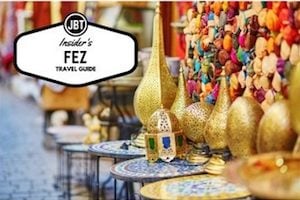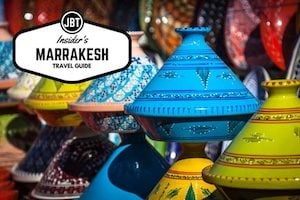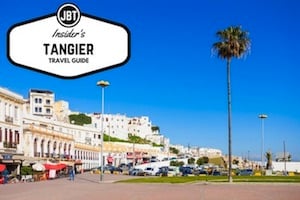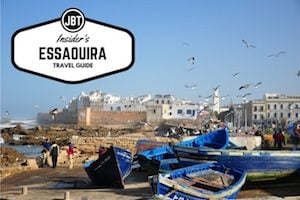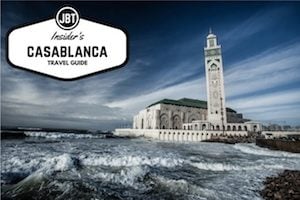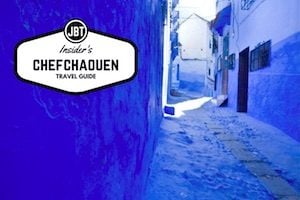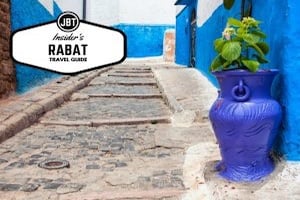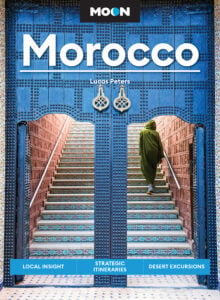
When planning for a trip to Morocco, it’s easy to focus on labyrinthine souks, exotic scenery and mouth-watering cuisine. However, a little studying up on the local currency will ensure that you are knowledgeable about exchange rates and that you can easily access Morocco money so that you can enjoy your tours in Morocco to the fullest.
Morocco Money: A Few Basics

The Moroccan Dirham (pronounced “DEER-hem”) is the official currency of Morocco. The abbreviation of the Moroccan Dirham internationally and on all currency exchanges is MAD (similar to the United States Dollar as USD, the Canadian Dollar as CAD, the British Pound as GBP, et cetera). However, in this write up, as in most guidebooks and around the Internet, you will find the Moroccan Dirham is commonly abbreviated as “dh.”
The plural form in standard Arabic is dirahim (pronounced “dih-RA-him”), although it’s common to use the word “dirhams” in English and French. One santim (pronounced “san-TEEM”), which comes from the French word centime, is worth 1/100 of a dirham and is abbreviated c. It is rare to see a coin smaller than 20c these days, however, you will come across 50c. There are coins for dirhams as well. These come in 1dh, 2dh, 5dh and 10dh coins. Paper notes of Morocco money come in denominations of 20dh, 50dh, 100dh and 200dh respectively.
Paper notes of 100dh and 200dh are the most common paper notes, equivalent to 10s and 20s in currencies in North America, Europe, and Australia
Other Moroccan Currencies
Around the country, particularly in markets and smaller villages, or sometimes with older people, prices might be quoted in a currency other than dirham. This has to do a lot with the Protectorate Era. In parts of Morocco, the names of the former currencies of France and Spain are used. The actual currency doesn’t exist any longer, though people will still look at the Moroccan currency and count in the one of the former currencies. A similar sort of thing can be seen with the Euro around Europe where some people, typically older, might still think in the older currency.
In small shops or markets throughout Morocco, you might be quoted a price in francs. This can be a little confusing, since the some Moroccans may use franc to stand for the equivalent of a dirham when speaking French, though the traditional usage of franc typically refers to 1/100 of a dirham (so 10 dirhams would be 1,000 francs). This usage is rare, though still in use in some parts of Morocco.
You might also hear “real” (ree-ahl), the old Spanish currency, being used. And just to confuse matters more, though it is the same word, the amount real refers to differs depending on the region. Around Tetouan its surrounding villages, real refers to 1/10 of a dirham. Whereas in the Middle Atlas, real will mean 1/20 of a dirham!
In large cities that do have quite a bit of tourism, such as Marrakesh, you may be quoted prices in your own currency back home, be that AUD, CAD, EUR, GBP, USD, or other currency!
Morocco Money Quick Reference
- Notes of 100dh and 200dh are the most common paper notes, equivalent to 10s and 20s.
- Around Morocco, other currencies are used by name, though not in practice. These are the franc and the real.
- One Franc = 1/100 of a dirham (1,000 francs = 10 dirhams).
- One Middle Atlas Real = 1/20 of a dirham (200 Middle Atlas reals = 10 dirhams).
- One Tetoauni Real = 1/2 of a dirham (10 Tetouani reals = 10 dirhams).
Needless to say, getting a handle of the currency can be a bit complicated linguistically in Morocco. Other than a few unsavory shopkeepers in the bazaars, most Moroccans are honest to a fault and will charge you just the right amount for goods and services. They might round the centimes up or down to the nearest dirham, which is common practice, so be ready for it.
Exchange, Banks, & ATMs
The dirham is officially designated as a closed currency, which means that it can only be legally traded within Morocco. Despite this regulation, small amounts of dirhams are usually available for exchange at larger travel agencies and at a few major airports (notably in the UK and France). While it is technically against the law to take dirhams outside of Morocco, the import and export of the currency is tolerated up to a limit of 10,000dh.
If dirhams are not available to you in your home country, don’t panic. All international airports in Morocco have a currency exchange counter and available cash machines. Exchange rates are fixed by law and charging high commissions is forbidden, which means that there are very small differences in fees between banks and exchange counters.
In larger cities, banks abound. If you are entering a bank to talk with a bank teller, remember to bring your passport and always ask for a receipt following a transaction. Note that many banks close during lunchtime and that during Ramadan and summertime, many banks are only open until 2pm or 3pm.
The most convenient and best option for travelers is to withdrawal funds using a debit card at one of the many ATM machines (commonly called a guichet automatique) located throughout the country. While ATMs tend to thin out in rural areas, they are plentiful in the cities, with more than twenty ATMs in the vicinity of the medina in Marrakesh alone.

Remember to check set a travel alert with your bank and/or card provider before leaving. You will also want to double-check that your PIN will work and to find out about any fees or commissions.
Save all exchange and ATM receipts in order to facilitate the exchange of any leftover Morocco money back into your local currency before departure.
Credit cards are accepted in modern shopping centers, fancier restaurants and large hotels, though cash is king. It’s not uncommon to carry thousands of dirhams on you, even for Moroccans!
Contact your bank before you leave to find out about any exchange rate fees. Traveler’s checks are not recommended for use in Morocco and are becoming less useful; banks often charge high fees to exchange them.
Tipping & Common Costs
Tipping is customary in Morocco. Here is a quick guide for tipping followed by a rundown of some really common costs you will likely experience.
Morocco Money: Quick Tipping Guide
- Guides, chauffeurs, as well as hiking and trekking guides are typically tipped between 50dh to 100dh per person, per day. So if you are traveling with a group of four, this would total 200-400dh total tip for the day, depending on how you enjoyed your service. If you are traveling with us, remember that we pay the highest rates in the business, so your tip really is a gratuity and not an income supplement.
- At larger restaurants, check the bill to see if a service charge has been added. If not, 10% of the bill is a nice tip to reward good service, although Moroccans generally tip slightly less.
- In a smaller restaurant or cafe, anywhere between 2dh and 5dh is fine.
- Hotel cleaning staff members vary widely. Some don’t tip at all and other tip generously as much as guide or driver per day. Tips are always appreciated. Most accommodations that we use have a collective tip jar that is shared every month with the entire staff of the accommodations. We encourage this practice as it fosters teamwork and shared purpose, making for a better stay for our guests.
If you are not traveling with us, other small gratuities you can expect to pay include:
- Parking lot attendants should be paid 3dh to 5dh (more in heavily trafficked areas) and are usually tipped an extra dirham or two on top of the parking fees.
- Gas station attendants are usually tipped a few dirhams as well after they have pumped your gas.
- Taxi drivers are generally only tipped for helping with baggage, though you can round up to the payment to the nearest 5 or 10dh if you want to be nice.
- Porters at hotels are usually tipped between 10dh and 20dh, depending on the amount, size and weight of the luggage.
- Hotel cleaning staff members vary widely. Some don’t tip at all and other tip generously as much as guide or driver per day. Tips are always appreciated.
- If you are turn around in one of the old medinas and a young boy helps you find your way back, a good tip is 20dh, though they will always ask for more.
The prices of some services in Morocco are much lower than in North America and Western Europe. Keep in mind that in the souks and smaller shops, bargaining is absolutely expected. Here are a few examples you are likely to come across:
- A short taxi ride within city limits in a small taxi (called a petit taxi), for example, will cost around 10-20dh.
- You can purchase a cup of coffee or soft drink for around 10dh.
- A glass of orange juice from a stall in the main square of Marrakesh, known as the Jamma el-Fnaa, will run you 10dh.
- A regular djellabah, the traditional garment worn by men and women, can be had for between 200-300dh.
With just a little advance planning, you won’t find yourself short of cash while scouring the markets for the carpet, tea set or babouches of your dreams!
Journey Beyond Travel has a variety of unique itineraries that allow you to experience the real Morocco. Our Eclectic Tour gives you an overview of the country’s highlights in both culture and landscape, while our Imperial Cities Tour takes you to the most inspiring locations including museums, UNESCO sights, and more. We also have various trips to the Sahara Desert of Morocco. Enjoy our website, quality articles, and feel free to join us on Facebook and Twitter.
